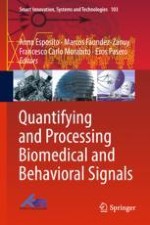The book is based on interdisciplinary research on various aspects and dynamics of human multimodal signal exchanges. It discusses realistic application scenarios where human interaction is the focus, in order to
identify new methods for data processing and data flow coordination through synchronization, and optimization of new encoding features combining contextually enacted communicative signals, and
develop shared digital data repositories and annotation standards for benchmarking the algorithmic feasibility and successive implementation of believable human–computer interaction (HCI) systems.
This book is a valuable resource for
a. the research community, PhD students, early stage researchers
c. schools, hospitals, and rehabilitation and assisted-living centers
e. the ICT market, and representatives from multimedia industries
